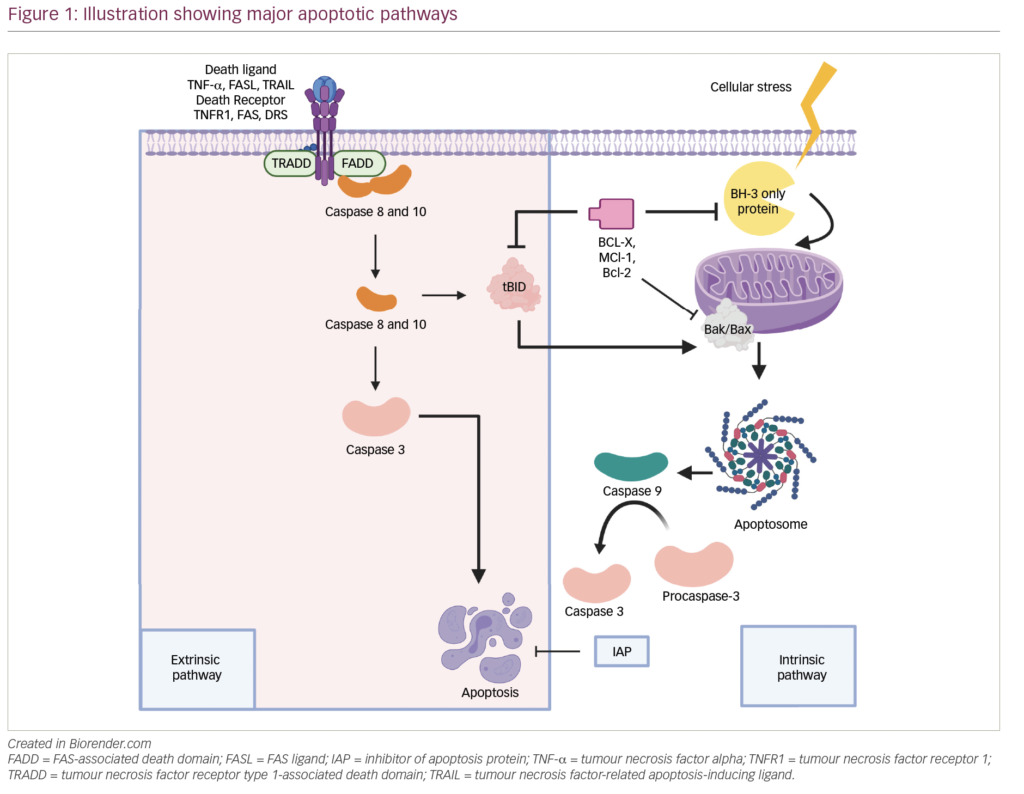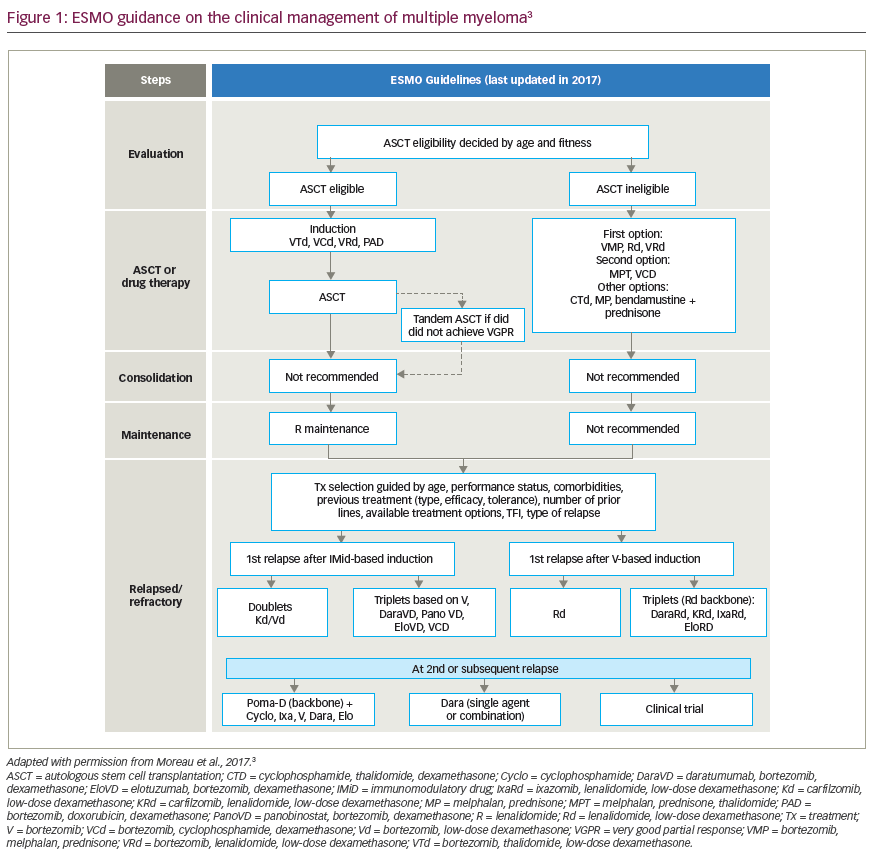Multiple myeloma (MM) is a plasma cell malignancy characterized by the overproduction of monoclonal immunoglobulins and the presence of hypercalcemia, renal injury, anemia, osteolytic lesions, and frequent infections.1,2 Other complications include hyperviscosity and amyloidosis.1,2 It is the second most common hematologic malignancy after non-Hodgkin’s lymphoma and will represent nearly 15 % of new hematologic malignancies diagnosed in 2012 in the US.3
MM is generally a disease of older individuals;4 the median age at diagnosis is approximately 69 years.5 With the approvals of the newer agents bortezomib, thalidomide, and lenalidomide, the median overall survival (OS) has improved from approximately two years in the late 1970s to 4.4–7.1 years in the decade since 2000.6 However, in patients with relapsed disease that is refractory to the aforementioned agents, the median event-free survival and OS times are five and nine months, respectively.7
A number of factors may influence the course of disease in an individual patient with MM. Advanced age, poor performance status, the presence of specific cytogenetic markers (e.g., deletion 17p, t(4;14)), the presence of immunoglobulin (Ig)A isotype, serum creatinine ≥2 mg/dl, extramedullary disease, and renal insufficiency each independently predict worse outcomes.1,8 Additional items of concern relate to the patient’s treatment history and include prior therapy-associated toxicity and prior stem cell transplant. The newer agents (i.e., bortezomib, thalidomide, and lenalidomide) have distinct toxicity profiles (including myelosuppression, peripheral neuropathy, and venous thromboembolic events [VTEs]),9 and the effective management of adverse events (AEs) associated with these agents is crucial to ensure that patients are able to receive the most effective treatment with minimal need for interruption.
To view the full article in PDF or eBook formats, please click on the icons above.














